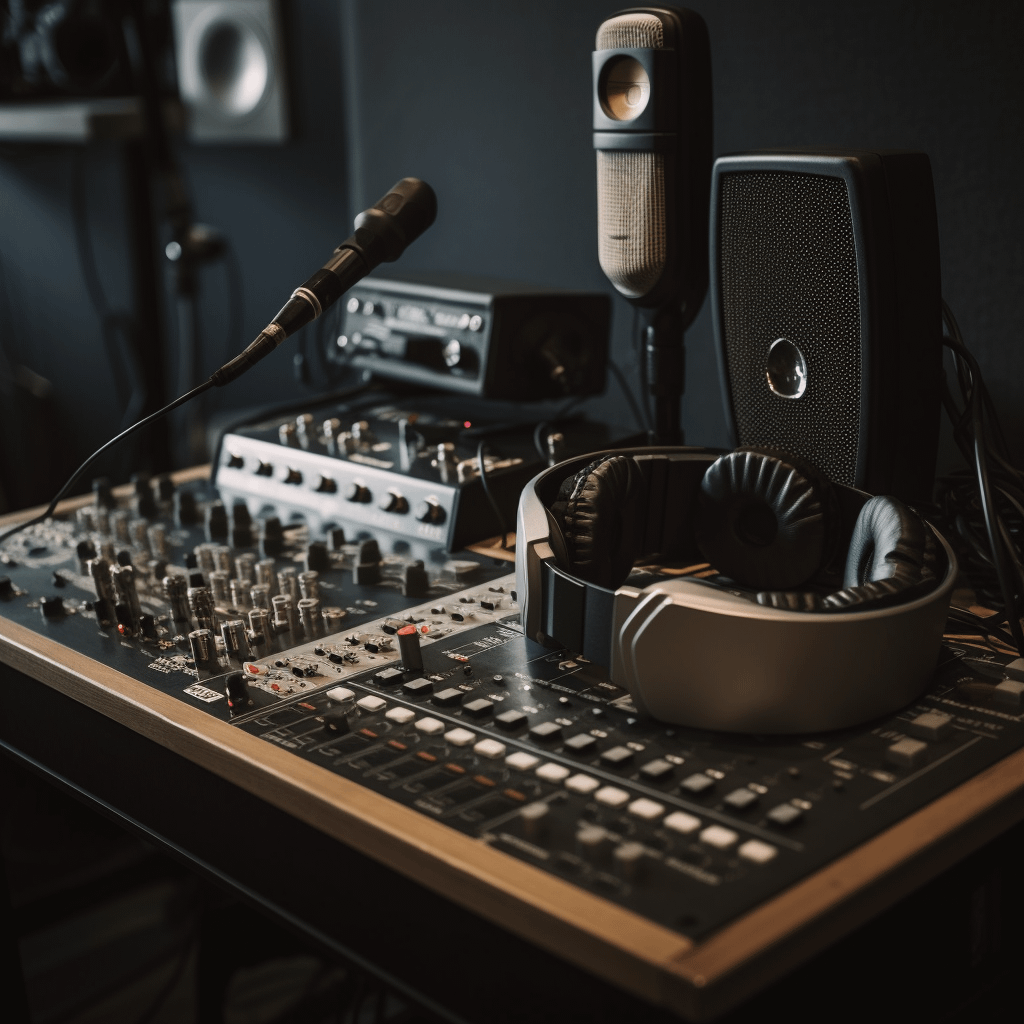Why Do You Need An Audio Interface For A Professional Voiceover Studio?
Mixers v Audio Interfaces
Mixers can be important tools for voiceover work as they allow you to control and manipulate the audio signals being recorded. However, depending on the specifics of your mic, USB vs XLR you actually need an audio interface. Let’s look at some of the key features of both that are important for voiceover work.
- Inputs: The number of inputs on an interface determines how many audio sources you can record at once. For voiceover work, you typically only need one input for the microphone, but if you plan on recording other audio sources, such as music or sound effects, you may need additional inputs.
- Mic Preamps: Mic preamps are the first stage of amplification in a mixer, and they are responsible for boosting the weak microphone signal to a level that can be processed by the rest of the mixer. Look for a mixer with high-quality mic preamps, as this will ensure that your recordings are clean and free of noise.
- Phantom Power: Many condenser microphones require phantom power to operate, which is a DC voltage sent to the microphone to power its internal electronics. Look for a mixer or audio interface that has a switchable phantom power supply, as this will make it easier to use different microphones with the mixer.
- Equalization (EQ): EQ is a set of filters that allow you to adjust the levels of different frequency ranges in your audio signal. This is useful for voiceover work as it allows you to adjust the tone of your voice, for example, making it warmer or brighter to suit the needs of the project.
- Compression: Compression is a processing tool that reduces the dynamic range of an audio signal. This can be useful for voiceover work as it helps to even out the volume of your voice, making it easier to hear what is being said in quieter parts of the recording.
- Effects: Some mixers come with built-in effects, such as reverb or delay. While these are not essential for voiceover work, they can be useful for adding some extra flavor to your recordings.
- Outputs: The number and type of outputs on a mixer will determine how you can connect it to your recording setup. Look for a mixer with both balanced and unbalanced outputs, as this will give you more flexibility when connecting to different types of audio interfaces or recorders.
When choosing a mixer for voiceover work, consider the number of inputs, quality of the mic preamps, availability of phantom power, EQ, compression, effects and outputs. A high-quality mixer will help you produce professional-quality recordings that meet the needs of your clients.
Which Audio Interface Is Best For Voiceover?
- Focusrite Scarlett 2i2 – This audio interface is a popular choice among beginners and professionals alike. It offers high-quality preamps, 24-bit/192kHz audio resolution, and low-latency performance.
- Universal Audio Apollo Twin MKII – This audio interface is well-known for its exceptional sound quality and built-in DSP processing. It also offers excellent compatibility with popular DAW software.
- MOTU M2 – This audio interface is a great choice for those who want a compact, portable option without sacrificing sound quality. It offers 24-bit/192kHz audio resolution, two high-quality preamps, and convenient front-panel controls.
- PreSonus Studio 68 – This audio interface is a great choice for recording bands and other ensembles. It offers four high-quality preamps, MIDI I/O, and a variety of other features that make it a versatile option.
- Apogee Duet – This audio interface is a favorite among professional musicians and producers for its exceptional sound quality and sleek design. It also offers convenient integration with Apple devices and software.
- Behringer U-Phoria UMC204HD – This audio interface is a budget-friendly option that still offers high-quality preamps and 24-bit/192kHz audio resolution. It’s a great choice for beginners or those on a tight budget.
- RME Babyface Pro FS – This audio interface is a high-end option that offers exceptional sound quality, low-latency performance, and a variety of advanced features. It’s a great choice for professional musicians and producers who demand the best.
Overall, the best audio interface for you will depend on your specific needs and budget. However, all of the options listed above are popular choices that offer high-quality sound and a variety of useful features. Once you have decided on the hardware you need, you will also need to consider how to connect to other voiceover studios.
As a British Female Voice over Artist, I have a professional broad-cast quality studio. I can link to other studios seamlessly using CleanFeed, ipDTL, and SourceConnect Pro (with other connectivity upon request). I use the very best equipment and technology to make sure my clients are happy with any recording and performance I do, and they come back time after time.
